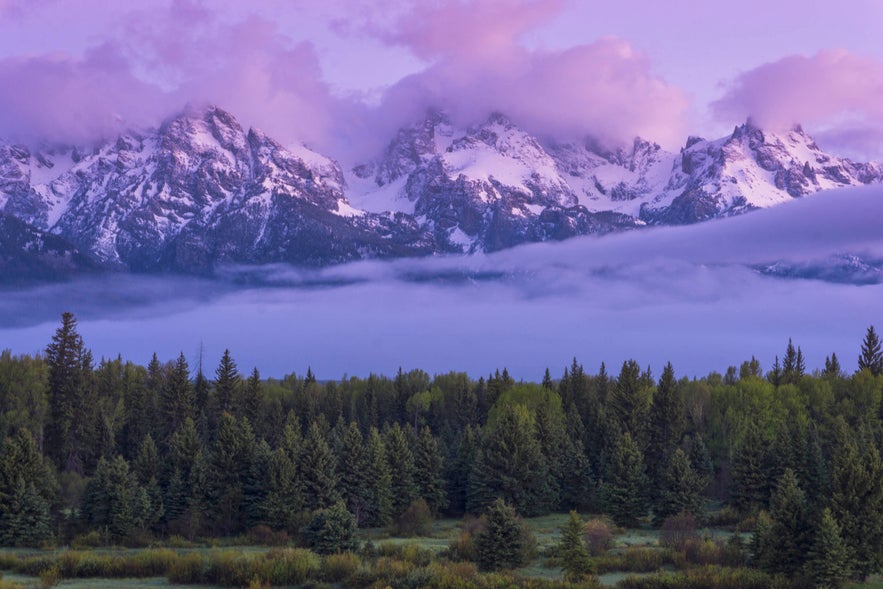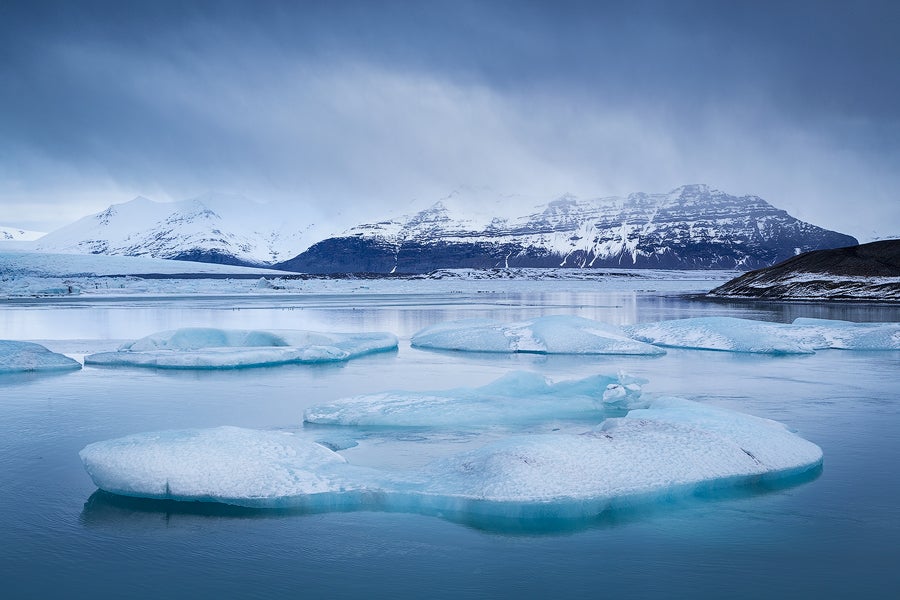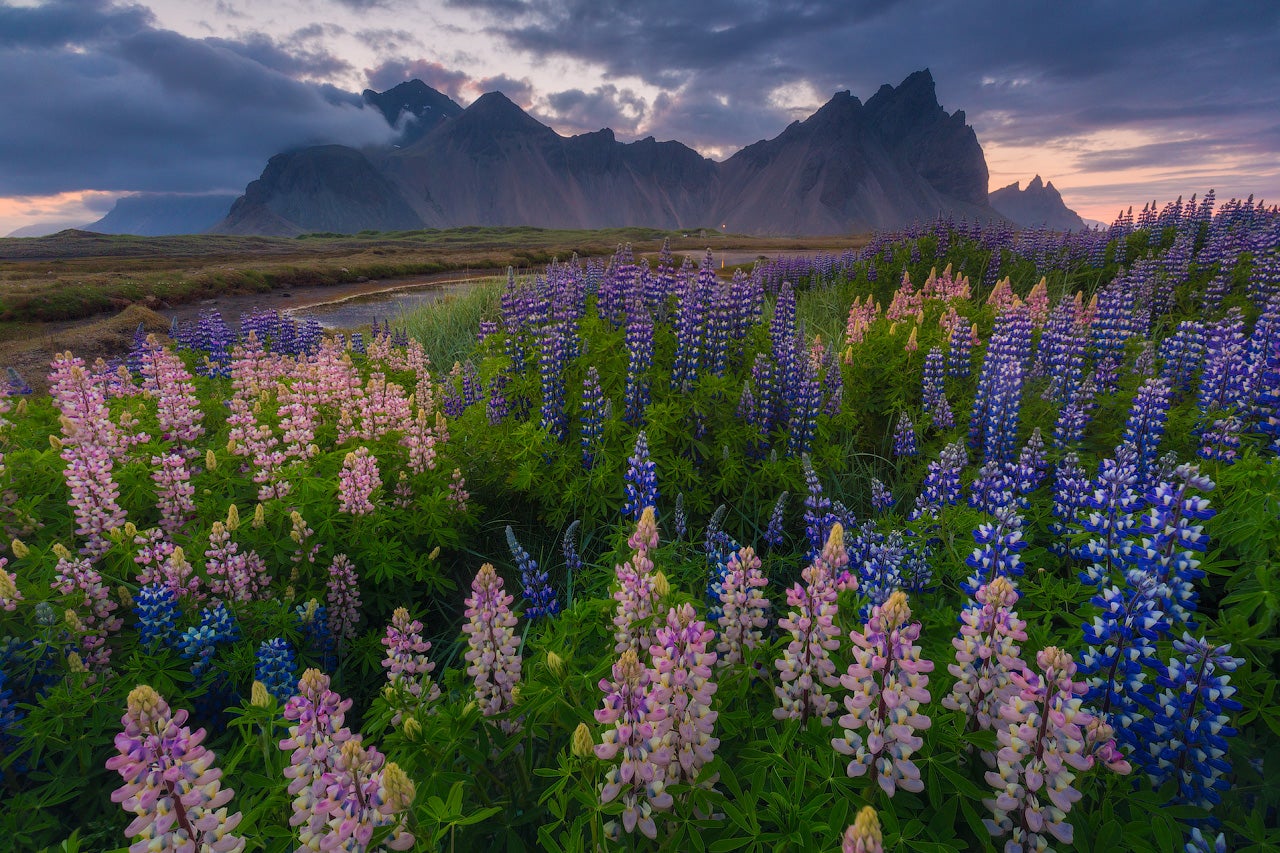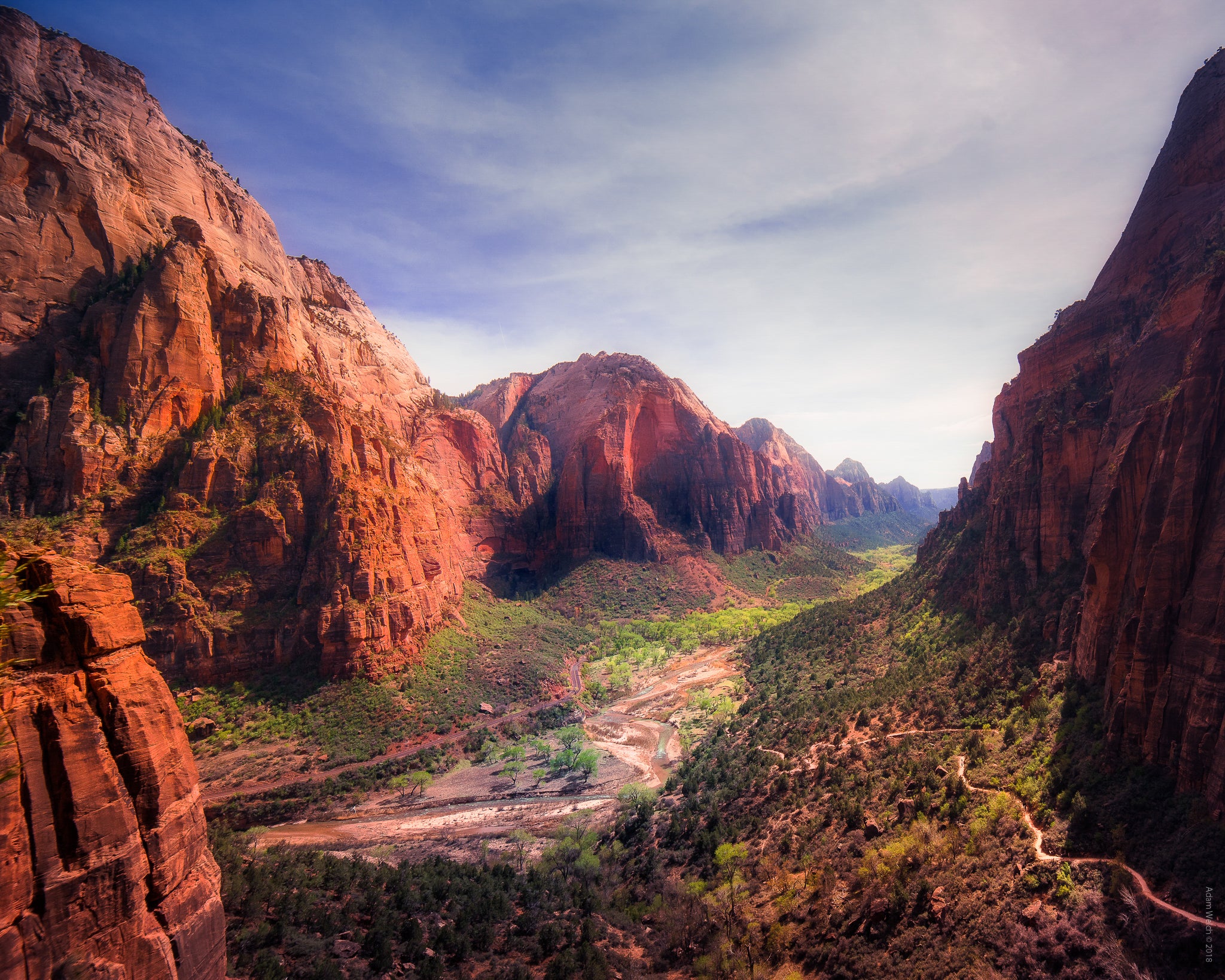
So, you've decided you want to become a professional landscape photographer? Well, get ready for some of the hardest and most exhilarating work that you could imagine. You are about to embark on a journey that not many people are bold enough to do.
- Learn all about The Power of Foreground in Landscape Photography of Iceland
- Discover The Most Popular Destinations for Photography Around the World
Before we get started with the steps of how to become a professional landscape photographer, I want to jot down a few bullet points of wisdom for you.
-
Becoming a landscape photographer isn't easy, but it's rewarding.
-
Be patient; it's going to take longer than you want it to.
-
Consistency will pay off.
-
Work harder than everyone else. Everyone wants the prize, no one wants the work.
Alright, now that we have all of the truth about becoming a landscape photographer out of the way, let's get into the steps.
Learn Everything About Your Camera
When you first start out in landscape photography, or any other genre of photograph for that matter, it's important to learn how to use your camera gear inside and out. Now that technology has evolved so much in photography, cameras can perform a vast amount of functions that previous shooters never even dreamed of. Do you think Ansel Adams ever thought that we would have wifi in cameras? I would guess not.
 It's important to understand how your camera gear works so that you can make the most of it. Photo by: 'David Johnston'.
It's important to understand how your camera gear works so that you can make the most of it. Photo by: 'David Johnston'.
Start out with the basics of your camera. Spend some time shooting in aperture priority and shutter priority and watch what your settings do in the different lighting situations. Once you feel like you're ready to move on, learn how to use your camera in manual mode. Manual is the setting that will allow you to shoot very creative long exposures, or tackle difficult lighting.
After you get the hang of manual mode, start to experiment with your camera's menu. Play around with the wifi capabilities, the multiple exposure settings, and bracketing.
Your camera is your tool to harness light. You'll discover more and more through practice. Eventually, you will be able to manage difficult lighting through settings using your knowledge of the camera's technology.
Learn Everything About Composition
 Camera gear isn't the be-all and end-all of photography. You need to learn about composition. Photo by: 'David Johnston'.
Camera gear isn't the be-all and end-all of photography. You need to learn about composition. Photo by: 'David Johnston'.
Yes, cameras are great. But it's important to remember that unless the person using the camera doesn't know anything about composition, the photos will still leave something to be desired. Composition is the artsy side of photography; it's the ability to construct a scene within the frame that is visually appealing to the eye.
Composition is all about using some very simple tools to start to develop you artistic eye as a photographer.
The second I said composition I bet half of you immediately thought I would talk about the rule of thirds. Well, not so much! Yes, the rule of thirds is a great guideline to follow when you are quickly composing a photo. However, photos that take more time require a more precise formula.
I'm talking about the golden ratio. The golden ratio is similar to the rule of thirds, and it has been used for centuries by artists like Michelangelo. If you Google golden ratio, you will get crazy math equations that no one understands. I'll keep it simple for you. The golden ratio is basically the rules of thirds, but slightly closer to the centre of the frame. Here is a graph showing the rule of thirds in blue and the golden ratio in red:

The golden ratio was made to be more aesthetically pleasing, and I'd say I would have to agree. Sometimes the rule of thirds pushes objects too far to the edges of the frame. I've practiced with both and my favourite photos are the ones that use the golden ratio.
You also want to work on perspective in photography. Everyone sees the world at eye level. As a photographer, your job is to show people something they rarely see. So, the ability to get up high or down low will become one of your best strategies.
Next, remove the clutter from your photographs. One of the most beneficial lessons in landscape photography composition I learned was from Michael Frye. It has to do with how much clutter is in a photo. You should have a distinct subject or feeling that you want to communicate in your photo. When you frame your shot and review the photo, ask yourself, "What takes away from the subject?" Whatever is taking from the subject is clutter.
Remove the clutter, frame the shot, and shoot another photo. Ask yourself again, "What takes away from the subject?" Again, remove the clutter, frame the shot, and shoot. By the third shot, I guarantee you will be taking a more interesting, direct photograph.
Overall, clutter is chaos within the photo. When you remove the chaos, you bring peace, harmony, and good composition to your landscape photograph.
Framing and composition go hand in hand. Framing is the process of including or excluding things within a photo.
Obviously, like we talked about earlier, you remove clutter. But, what about things that aren't clutter; things that could potentially add to a photo? Items that add to the feel and idea of a photo should be meticulously framed. If you feel like a subject within the frame tells the whole story of a photo, then include it. The last thing you want is cutting something off at the top of the photo that completes the composition. Use your judgment in framing. Take a shot including the whole object and then excluding the whole object. If you like one more than the other, go with the one you like!
Build Your Portfolio
 Building a portfolio takes time and effort. Photo by: 'David Johnston'.
Building a portfolio takes time and effort. Photo by: 'David Johnston'.
You're now ready to build your portfolio. It's time to work. It's time to get outside and get dirty; to take risks and do whatever it takes to get shots no one else is willing to get. This is the step when you shoot with numb fingers, in high winds, and during heavy downpours of rain and snow. Remember what I said when this post started? Everyone wants the prize but no one wants the work. Taking photos or extreme or rarely seen landscapes often happens during unusual weather. Everybody visits places on sunny days, but no one sits through the rain to shoot a clearing storm.
Use your knowledge to start to build your portfolio. Remember, your portfolio is where people will come to see your best work and decide whether or not they want to follow you or work with you. So, include a decent amount of photographs to your portfolio without overwhelming them. I'd recommend keeping your portfolio at 20-25 of your best images.
Create a Following
 Marketing yourself is important to create a following. Photo by: 'David Johnston'.
Marketing yourself is important to create a following. Photo by: 'David Johnston'.
Marketing yourself as a photographer is a huge part of becoming a photographer. You can create a following on multiple platforms, starting with social media.
 Facebook can bring a lot of attention to your work. Photo by: 'David Johnston'.
Facebook can bring a lot of attention to your work. Photo by: 'David Johnston'.
What Works...
What a lot of people don't realise is that Facebook brings attention to your posts based on an algorithm. Don't try to memorise the algorithm because it's constantly changing, which makes social media marketing even more difficult. Facebook uses their algorithm to decide whether or not your post needs to show up on news feeds based on the content, likes, comments, and shares.
Most of the time, the algorithm responds very favourably with photos and videos. It might be because that's what catches the eyes of the people on Facebook. So, if you have the ability to post a photo, do it. Keep track of how different posts act differently based on the views and interactions.
What Doesn't Work...
In short, links don't work well. Facebook views links as spam, and they want to reduce the amount of spam on Facebook to benefit the enjoyment of users. Anything that's going to pull people away from Facebook won't do well. They don't want links polluting Facebook feeds. So, if you're going to post a link, accompany it with a photo.
 Twitter may be confusing but you should persist. Photo by: 'David Johnston'.
Twitter may be confusing but you should persist. Photo by: 'David Johnston'.
What Works...
Twitter is crazy and confusing. You constantly have to battle for any attention at all. You don't want to annoy people with too many tweets or retweets, and you don't want to stay silent.
I've found that about four or five tweets per day is a good number. Also, photos are king. Nothing gets catches the eyes better than a large photo among a bunch of text. So, post photos on Twitter along with short, precise headlines.
What Doesn't Work...
Links without descriptions don't work...
Links to other media (like to a Facebook post) don't do well...
Too many retweets are annoying...
Retweeting something about yourself doesn't do well...
 Instagram is one of the best photo sharing apps for landscape photographers. Photo by: 'David Johnston'.
Instagram is one of the best photo sharing apps for landscape photographers. Photo by: 'David Johnston'.
What Works...
I love Instagram. It's full of happiness. No other social media site has so many beautiful things coming together for interaction.
The Instagram key is the location and the hashtag. Always link your posts with locations from where they were shot, and always use hashtags. The best place for hashtags are after your written content. Hashtags allow people to see photos after they search for a specific term.
What Doesn't Work...
Photos without content don't work. Yes, Instagram is made for photography. However, if you don't have a description or short phrase describing the photo, not many people will like it. So, add at least a short description or emotion. Also, multiple posts in a row are highly frowned upon. If you're going to post multiple photos to Instagram, spread them out throughout the day.
Additional Tips
 Social media takes time but can lead to success for your photography business. Photo by: 'David Johnston'.
Social media takes time but can lead to success for your photography business. Photo by: 'David Johnston'.
In his book Jab Jab Jab Right Hook, Gary Vaynerchuk describes the difficulties and success that social media can have on your business. The two things that I took away from the book were:
-
Social media takes time. You can't write a great tweet and expect thousands of people to follow you. You have to show people that they can trust you with great content so they will pay attention to what you have to say. That means you're going to get a trickle of a few followers at a time until one day you realise how many people are following you. Stay diligent, stay focused.
-
Romance your followers. Don't write post after post asking for them to do something for you. Instead, give! Give them great content without asking them for anything. Show them a photo of what you're up to. Write a quick thank you note to them. Give something away. THEN, you can write one post asking for them to buy a product.
Create an Email Following
 Email is a great marketing tool to reach your followers. Photo by: 'David Johnston'.
Email is a great marketing tool to reach your followers. Photo by: 'David Johnston'.
When you're running a photography business, your best marketing asset is your email account.
Email is your best marking asset because of two reasons. The first is that it gives you direct access to your most loyal followers. They are the ones who actually sign up for your email list, click on your mass emails you send out, and come to events after learning about them via email.
Email is still relevant.
Reason number two why email is your most important asset is a story from my own background. When I was first starting out in photography, I had ZERO connections. It's hard to get anywhere when no one knows who you are. One day, I decided to do something about it. I spent the entire day sending emails to photographers and photography companies to see if they had any options for me. I was astonished to find that there were a lot of companies that were willing to help me out.
Create Five Legs of Income
 You need to have a detailed plan to become a professional landscape photographer. Photo by: 'David Johnston'.
You need to have a detailed plan to become a professional landscape photographer. Photo by: 'David Johnston'.
There's a serious difference in dreaming and doing, and a serious difference in following your dreams and following a detailed plan. The photographers who succeed are the ones who follow the detailed plan.
Now, I'm not trying to rain on your parade. I'm just being honest. I want you to succeed. I don't want to see you lose your car, your house, and your drive to succeed. That's why I'm going to give you the truth about becoming a professional landscape photographer.
It's hard!
There's a reason that one of the most asked questions I get is about the steps to becoming a professional landscape photographer. It's because a lot of people want to do, and a lot of people don't know how to do it, or have failed in doing it.
When you plan to become a photographer, you have to have a plan. But, what goes into a plan? Well, I recommend coming up with five different legs of income.
Think of it like this; you are sitting on a stool with three legs. If one leg breaks, you fall to the ground. However, if you're sitting on a stool with five legs and one breaks, you might wobble for a moment, but you stay on the stool. The legs of the stool are your sources of income. You want to have enough sources of income coming in that if one fails, or stops producing money, you still have four more to support you.
Your five sources of income could be anything. You could...
-
Teach photography workshops
-
Write photography ebooks
-
Work with travel bureaus
-
Sell online courses
-
Writing articles
-
Partnering with photography companies
-
Sponsors
Theses are just a few ideas that could go toward your five sources of income. Come up with five different sources or income on your own that fit what you want to do as a photographer, and then write out a plan to make those happen. Don't just say, "I'm going to do this and it'll just happen as it will happen." No, you need to have a direct plan in place to know where you're going.
The next part of the process is all on you.
You have your plan in place.
Now it's time to do it.
About the author: David Johnston is a landscape photographer based in the USA. You can find more of his work on his website, or by following him on Facebook and Instagram.
Check out our photography workshops in Iceland and abroad, which are run by our expert photo guides. They will teach you everything that you need to know to set yourself up as a professional landscape photographer.











